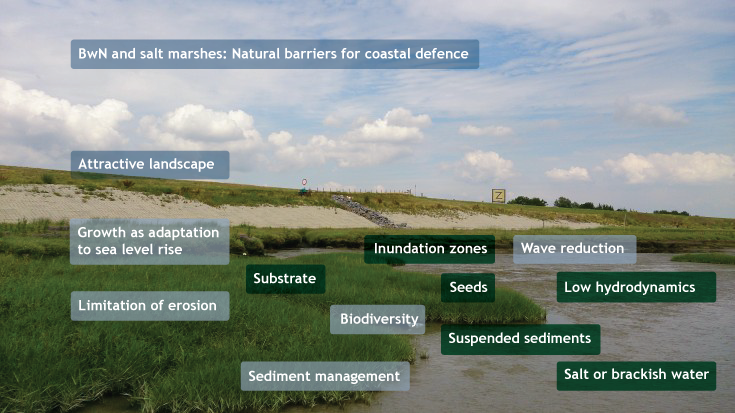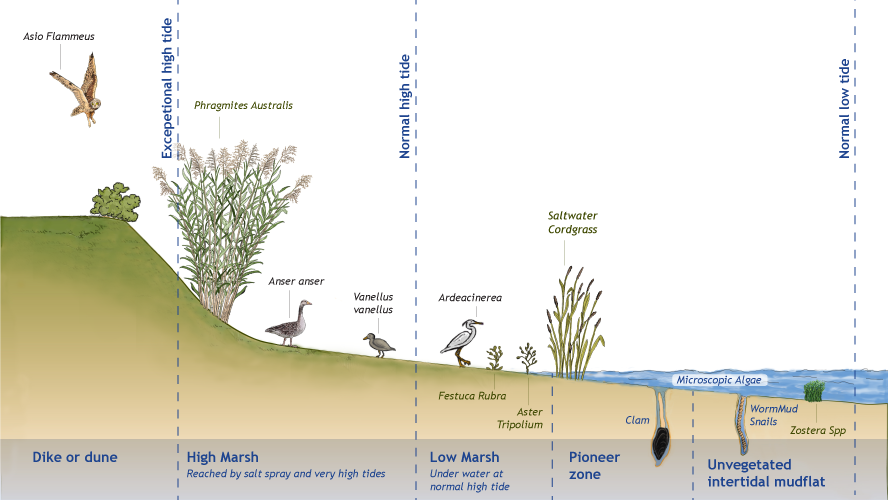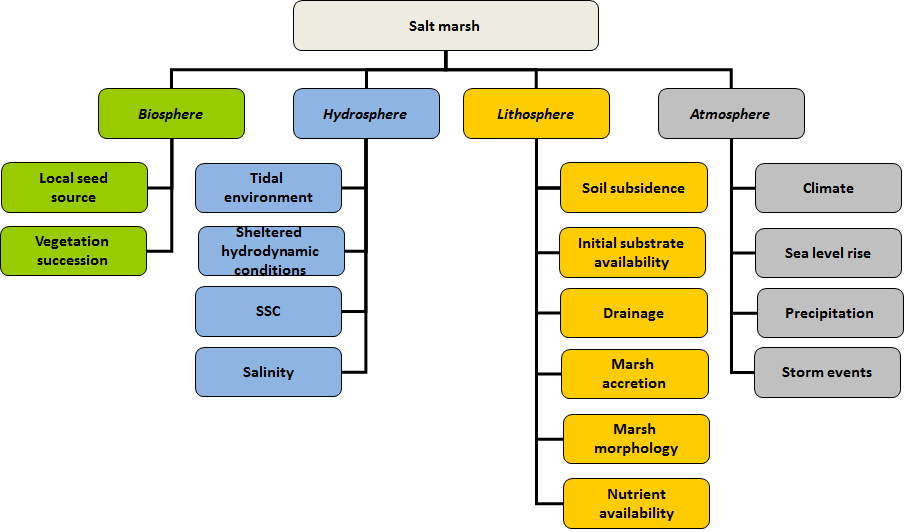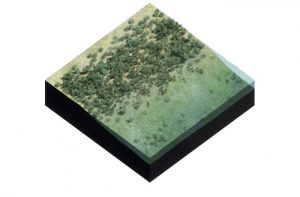Get Started
Salt marsh ecosystems create biodiverse transitional zones between land and water, which serve as natural barriers for coastal defence through increased friction that reduces wave heights. For the establishment, restoration or development of salt marshes it is important that suitable preconditions are present or can be realized. On this webpage, habitat requirements for salt marshes with mineral soils and low organic levels are given. Focus is on necessary preconditions including salinity, inundation time, hydrodynamics, substrate, sedimentation and suspended solids. Through this, planners and designers can estimate if salt marshes are a promising option to incorporate into a design.

Salt marsh characteristics
Salt marshes are ecosystems that are vegetated by halophytic plants and that are regularly flooded by the sea. Salt marshes distinguish themselves from peat-based marshes and freshwater marshes in that they are inundated by saline water and have an average salinity greater than 0.5 g of solutes per kg of water (Odus, 1988) whereby marsh growth is the result of ample availability of sediments. The salt marshes discussed here are located in a temperate climate, at the upper part of the intertidal zone. No description is given of specific plant species. Depending on the geographic location of the marsh and salinity conditions, different species will establish/settle. For more information on plant species in temperate salt marshes, one is referred to TMAP Guidelines for integrated Waddensea Monitoring and to table of species.
Salt marshes extend vertically from well below Mean High Tide up to the yearly highest water levels.The tidal flow brings in fine-grained suspended sediment. Plants trap this sediment, resulting in a marsh surface that steadily grows upwards. Typical marsh accretion rates are in the order of a centimetre per year, depending on tidal range, soil stability by the local vegetation and the availability of suspended sediment. Marsh accretion rates need to be equal or preferably higher than current rates of enhanced sea-level rise to ensure a long-term sustainable salt marsh.
Different developmental stages can be distinguished in time, with a succession from pioneer to climax salt marsh. In the Trilateral Monitoring and Assessment Programme (TMAP), a common monitoring programme for the Wadden Sea, three main salt marsh zones are distinguished:
- the pioneer zone where plant growth starts at about 40 cm below mean high tide (MHT);
- the low marsh, inundated during mean spring tides (100-400 floods/year);
- the middle/high marsh with less than 100 floods per year.
Salt marshes have high nature value and are protected under European and national laws.

Salt marsh benefits and their potential in coastal designs
Salt marshes can be interesting to incorporate in a (coastal) design as they:
- can be used for coastal protection as they reduce wave energy due to presence of foreland including additional friction provided by vegetation;
- are a sustainable form of coastal protection as salt marshes can keep up with (certain rates of) sea level rise by trapping sediment;
- can improve water quality as salt marsh vegetation traps sediment;
- have high natural value and can contribute to biodiversity
- form rest and foraging places for migrating birds
- store carbon
- form an attractive landscape / have recreational value;
- can be used for silt agriculture

For more detailed information on the spheres, given in the image above, click the links below.

